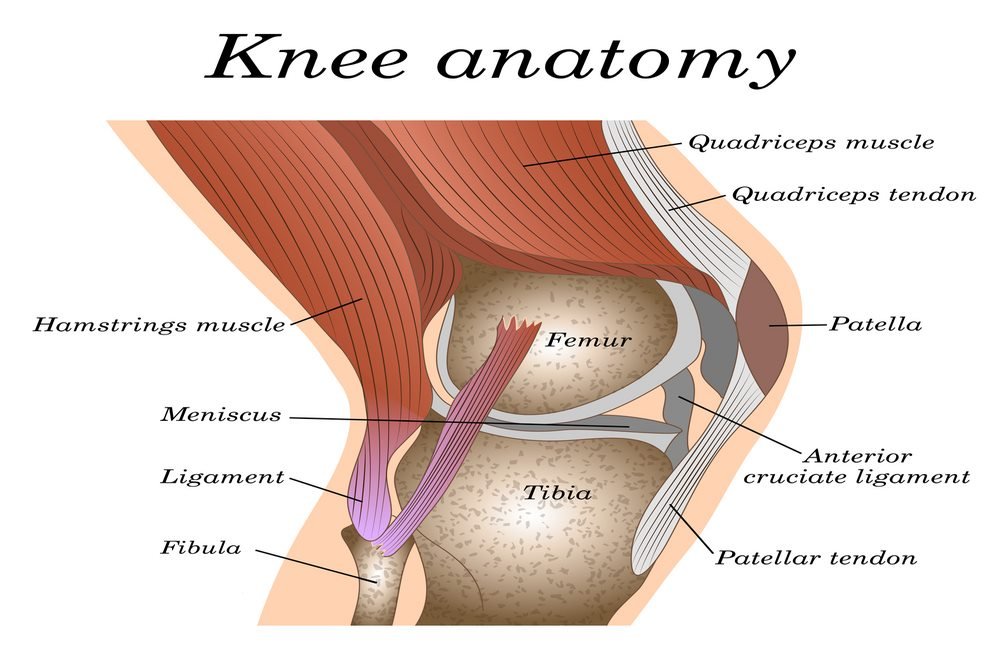The knee joint is one the body’s primary weight bearing joints. It is a hinge type joint which connects the femur (the longest bone in the body) to the fibula and tibia (shin bones).The knee joint is formed by the combination of four bones; the thigh bone (or femur), the tibia (the larger of the two lower leg bones), the fibula, the smaller of the lower leg bones, and the patella (that fits into a depression of the tibia). The knee joint allows both – a slight side-to-side motion and a hinge motion between the upper and lower leg.
Here’s a brief anatomy of the knee;
The knee Forms Two Main Joints:
- The tibio-femoral is the joint where the tibia meets the femur
- The patellofemoral joint where the kneecap (or patella) meets the femur
There are two menisci (or meniscus, solitary) in the knee. These two joints are aligned in such a way that they work together to form a modified type of hinge joint. Hinge joints are those that allow bending and straightening of the bones and also a slight rotation from side to side.
The knee joint is vulnerable to traumas and injuries as it bears a large amount of body weight and pressure while you are walking or doing a physical exercise. When you walk, studies have shown that the load on your knees is 1.5 times your total body weight. It increases with the physical activity and exercise. For instance, the weight will be 3-4 times of your when climbing stairs. When squating, the load may increase to about 8 times your body weight!
Anatomical Terms
Anatomical terms are necessary to describe the body part and motions more precisely. Instead of a doctor simply saying that “the patient’s knee hurts”, he or she can say that “the patient’s knee hurts antero-laterally” to specify where exactly in the knee you are having pain. Identifying specific areas of pain help to guide the next steps in treatment or work-up. Below are some anatomic terms doctors use to describe the location (as applied to the knee):
- Anterior – If facing the knee, this is the front of the knee
- Posterior – If facing the knee, this is the back of the knee.
- Medial – The side of the knee that is closest to the other knee, if you put your knees together, the medial sides of each knee would touch
- Lateral – The side of the knee that is farthest from the other knee (opposite of the medial side)
- Abduction – Moving away from the body (raising the leg away from midline i.e. towards the side)
- Adduction – Moving towards the body (lowering the leg toward midline i.e. from the side)
- Proximal – Located nearest to the point of attachment or reference, or center of the body. Example: the knee is proximal to the ankle
- Distal – Located farthest from the point of attachment or reference, or center of the body. Example: the ankle joint and foot are distal to the knee
- Inferior – Located beneath, under or below the knee
- Superior – Located above the knee

